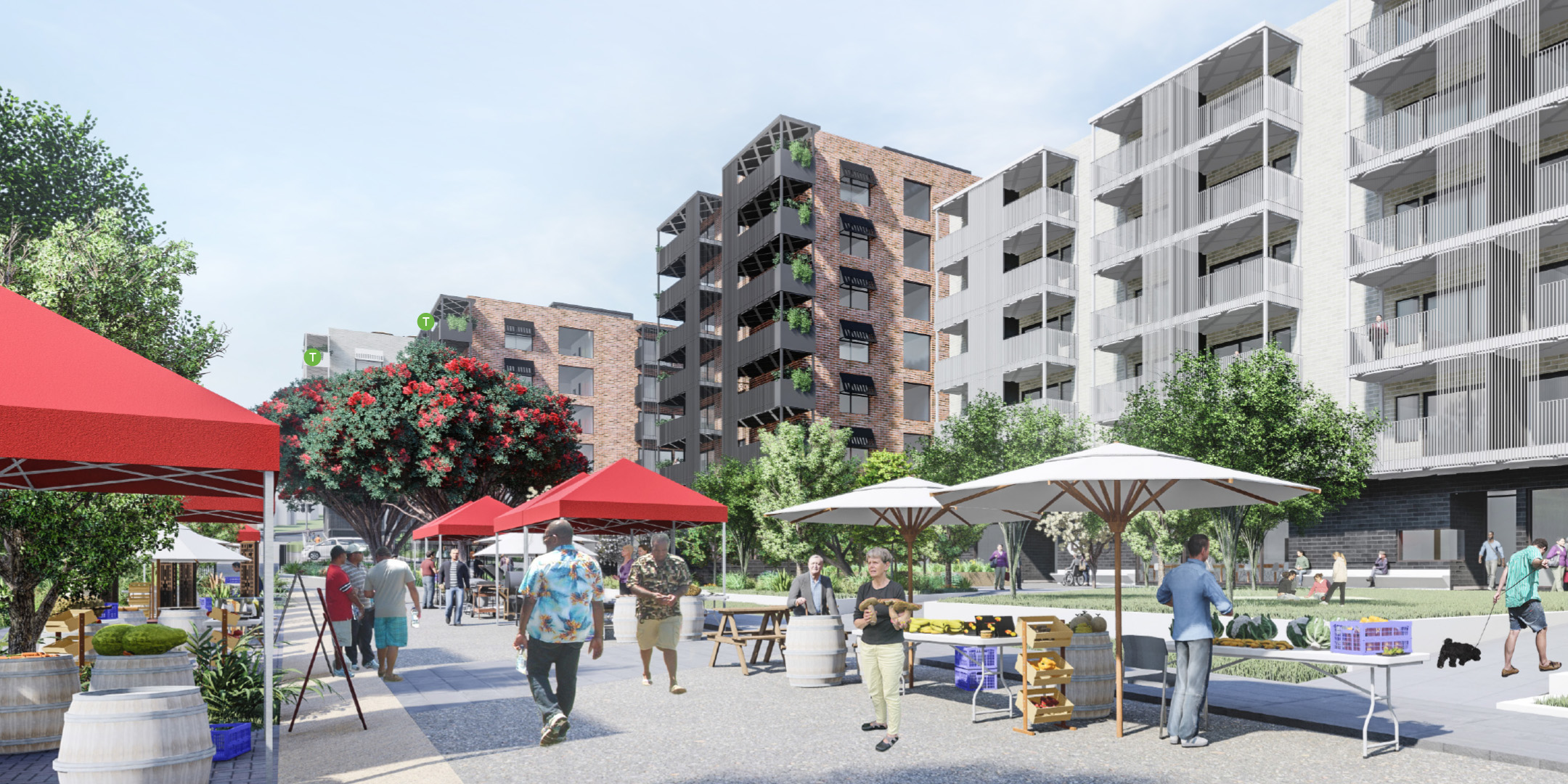Maximising the co-benefits of Carbon-Smart Design
1 September 2025
Designing landscapes for more than just carbon mitigation
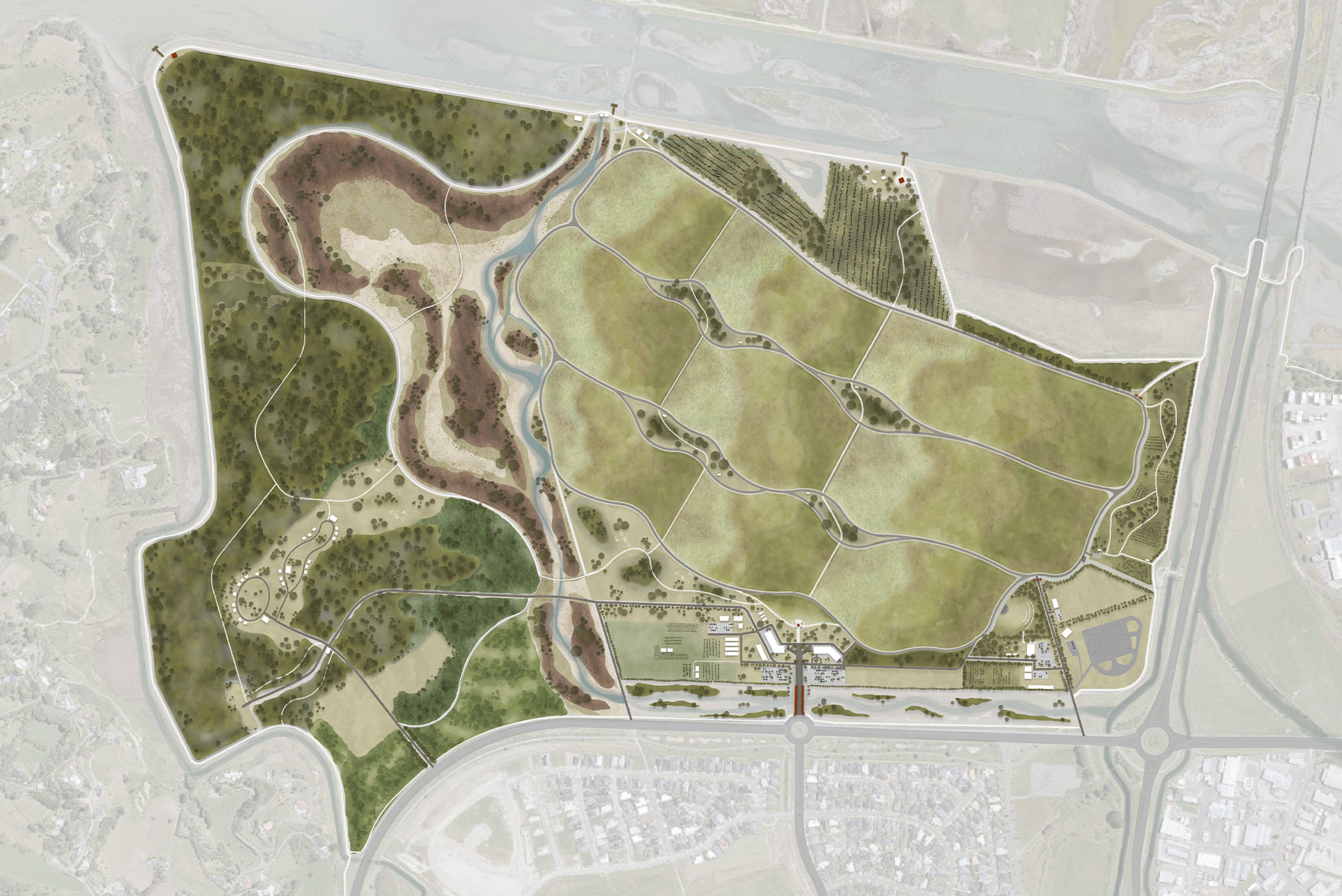
From rising waters to intensifying heatwaves, the impacts of climate change are reshaping landscapes and communities globally, including right here in Aotearoa New Zealand. As environmental consultants and designers we must adapt quickly to meet the demands of rapidly changing environmental pressures. We’re moving beyond carbon reduction to deliver solutions that also support biodiversity, community wellbeing, and economic resilience.
The Carbon Smart Design Guidelines, developed by Boffa Miskell’s multidisciplinary team, offer a transformative framework to help landscape architects and clients respond to climate challenges with clarity, creativity, and purpose.
What is Carbon Smart Design?
Carbon Smart Design is more than a sustainability checklist; it’s a whole-of-project philosophy. Grounded in international best practice and tailored to the Aotearoa context, it guides teams from early planning, assessment and engagement through to design, construction and long-term maintenance.
By integrating sustainability goals, te Ao Māori perspectives, and a deep understanding of site context and assets, Carbon Smart Design enables climate-adaptive, low-carbon outcomes. But it goes further by unlocking co-benefits that include thriving ecosystems, vibrant public spaces, and resilient local economies.
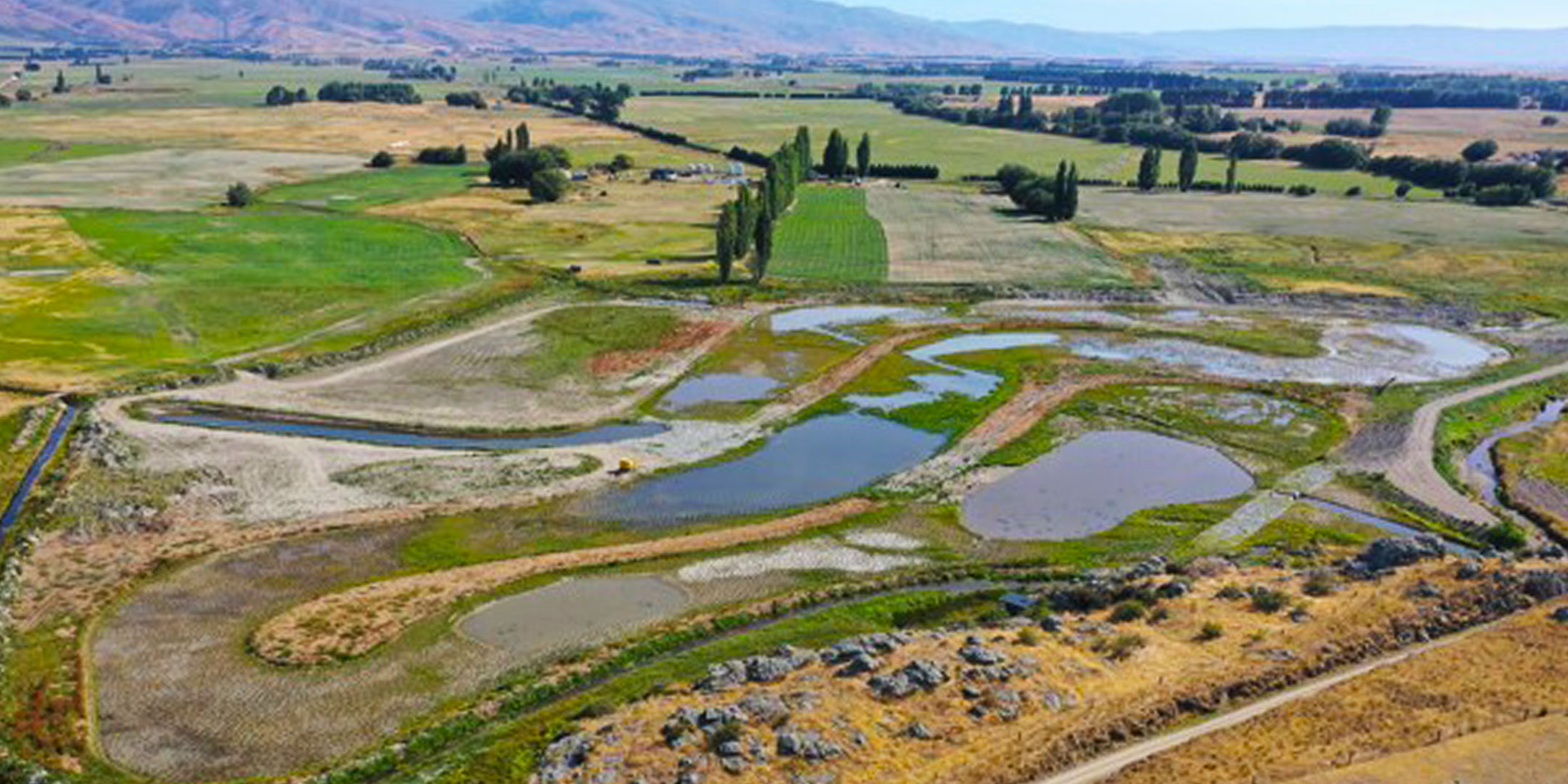
Environmental Co-Benefits
Nature-based solutions (NbS) are central to Carbon Smart Design. Rather than relying on resource-intensive engineering, the guidelines promote integrated, ecological approaches — such as wetlands for stormwater management and native planting for erosion control.
Carbon Smart strategies also minimise soil disturbance, preserving microbiotic networks, reducing waterway sedimentation, and lowering carbon release. Each site is treated as an opportunity to protect and enhance biodiversity, with designs that avoid displacing existing ecological communities and instead strengthen habitat corridors, even in urban settings.
Project examples:
- Te Hakapupu Feasibility Study – Nature-based flood mitigation
- Ahuriri Regional Park Masterplan – Culturally significant ecological infrastructure and recreation
- La Rosa Stream Daylighting – Urban biodiversity enhancement
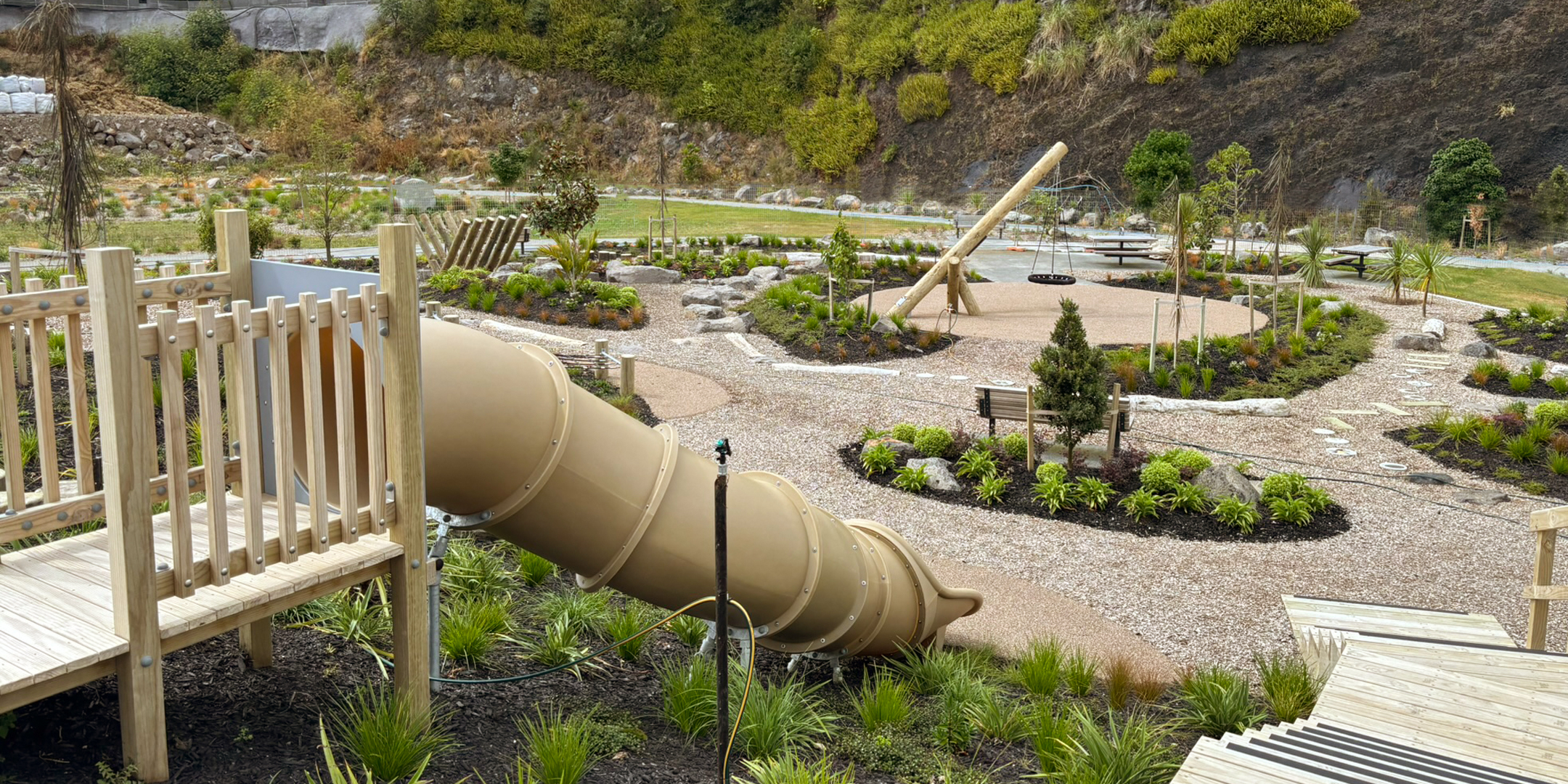
Social Co-Benefits
Carbon Smart Design connect people with place and each other. By reflecting the natural and cultural identity of place, they foster belonging and wellbeing. Green spaces become hubs for gathering, growing food, exercising, and connecting with te taiao.
In times of climate instability, these designs offer stable infrastructure and adaptable spaces that support community self-reliance and equitable access to resources. Through thoughtful engagement with mana whenua, users, and other stakeholders, Carbon Smart landscapes become places of shared value and connection.
Project examples:
- Paerata Rise – Community-focused green infrastructure
- Taurangi Reserve, Three Kings – Restorative urban design
- Te Māra Hūpara Playground – Cultural and ecological play space
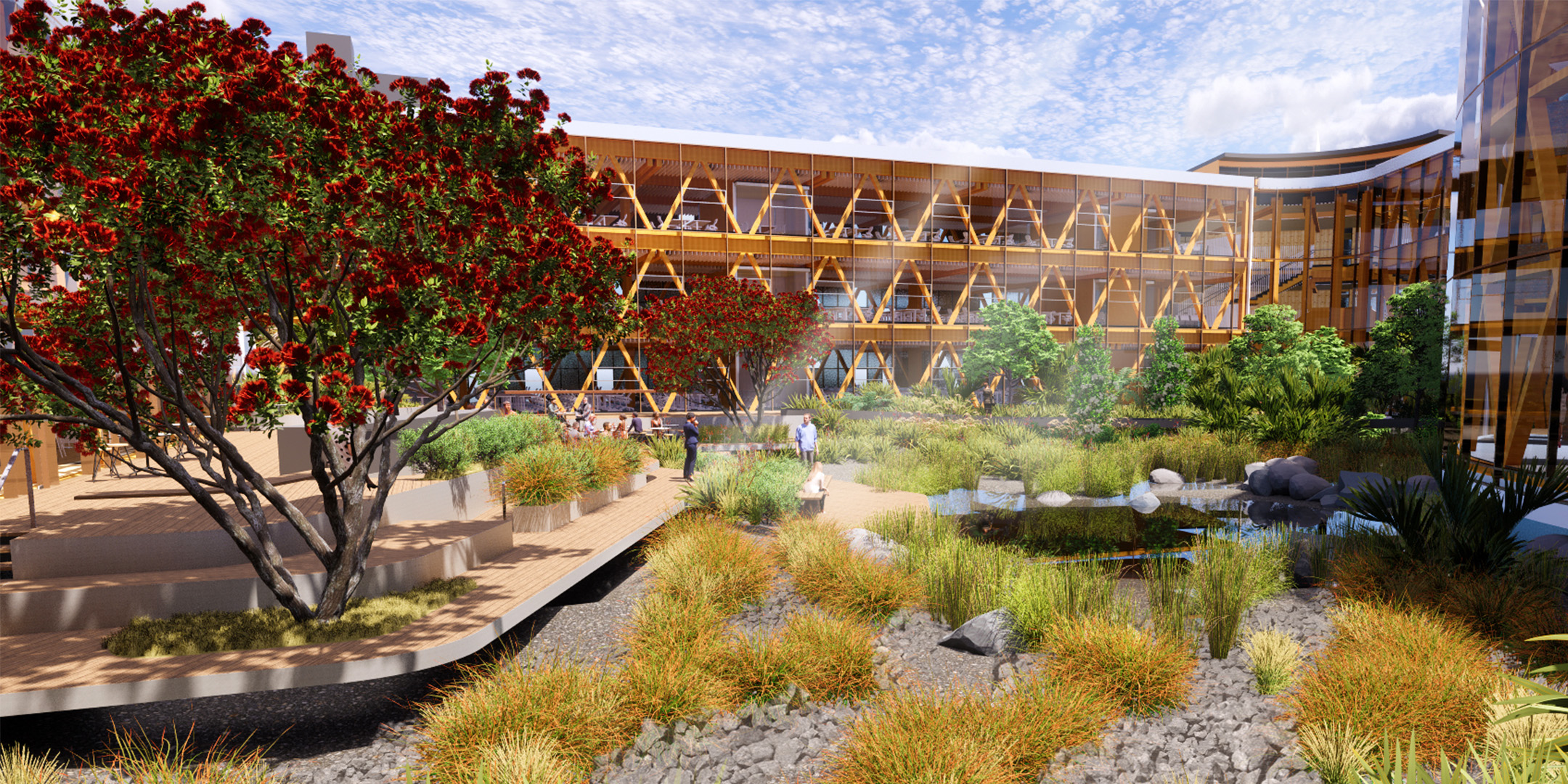
Economic Co-Benefits
At its core, Carbon Smart Design is about doing more with less. It favours durable, low-carbon materials, reduces waste and earthworks, and uses softscape to lower building cooling costs and manage stormwater. Early collaboration with contractors and maintenance teams ensures efficient, long-lasting outcomes with reduced operational costs.
By prioritising site-responsive, nature-based solutions, Carbon Smart Designs reduce disaster risk and protects assets— often at lower cost than engineered alternatives.
These designs activate sites, attract visitors, and stimulate local economies. Additionally, well-designed green spaces near workplaces have been shown to improve concentration, reduce stress, and boost productivity. With financial incentives like green loans now widely available from major banks, Carbon Smart projects are increasingly viable and attractive for development.
- Fisher & Paykel Global Headquarters – Carbon-Smart Workplace Wellbeing
- Taurangi Reserve, Three Kings – Residential community activation and resilience
- Community Lane, Highbury Triangle – Low-carbon, high-impact placemaking







